Missiles and propaganda. Russia always accompanies strikes on civilians with an information campaign. What are they saying this time?
"...Could Zelenskyy have ordered the Armed Forces of Ukraine to strike a children's hospital during a Russian missile attack to get more air defense systems and aircraft?" rhetorically asks a Russian propagandist on Telegram. He immediately answers himself: "Zelenskyy showed with Bucha that he is ready for any crimes against humanity..." While the ruins were still smoking, Russian propaganda launched a wide and clearly pre-planned information campaign. It consisted of the usual elements for such cases, but there was also something new: a wave of posts claiming that peace negotiations with Russia are necessary.
Blurring reality
The main goal of Russian disinformation in such cases is to blur reality, sow doubt, and offer as many different versions as possible, both among Ukrainians and foreigners.
The basic rule of propaganda in the modern world is that the more versions of a single event (even with seemingly dominant truth), the less people want to figure out what actually happened. Therefore, immediately after the missile strike on Kyiv, Russian propagandists, military correspondents, and bloggers began publishing versions that the missile that hit the hospital was launched by Ukrainian air defense, that the Ukrainian army occupied the hospital using children as cover, and that it was a planned operation by Zelenskyy to beg for more money from the West.
Leading world media wrote about this event on social networks. Comments under such posts are full of Russian propaganda spam, spreading various versions and explanations of what happened. All versions, except the simple and truthful one: the Russians deliberately targeted the children's hospital, and the Ukrainian air defense, exhausted by a massive attack of various types of missiles, could not shoot them all down.
In the post-truth world, facts matter less and less than appeals to emotions and personal beliefs. Many people interpret the truth according to their prejudices.
Add to this the idea that the one who first catches the reader's eye is right (thus debunking fakes is less effective than their original cause). Therefore, immediately after the attack, in all social networks without exception, at all levels — from the Russian Ministry of Defense to anonymous AI-controlled commentators — a spam mode was activated, generating Russian versions and interpretations to fill the information space as much as possible.
Below are 11 universal theses that Russian propaganda spreads after every loud shelling of civilian objects.
1. The eternal refrain: “Russians do not shoot at civilians ”
There is no Russian terrorist attack that cannot be blamed on Ukrainian air defense. This time, some Russian bloggers even managed to combine in three posts the claim that it was an air defense missile that hit "Ohmatdyt" and that the missile was not shot down because all the air defense systems were moved out of Kyiv to protect the F-16s (thus, according to the twisted logic of Russian propaganda, Ukrainians should be against the supply of expensive and effective weapons to Ukraine because it does not help us counter the enemy but instead makes our cities defenseless against Russian missiles).
Special attention should be paid to the fake that the video of the direct hit shows not a Russian missile but a Patriot missile — this is being reproduced with proofs and screenshots by most Russian channels, foreign Russian lackeys, and thousands of English-speaking bots in the comments under news about the shelling from CNN, Guardian, and Financial Times.
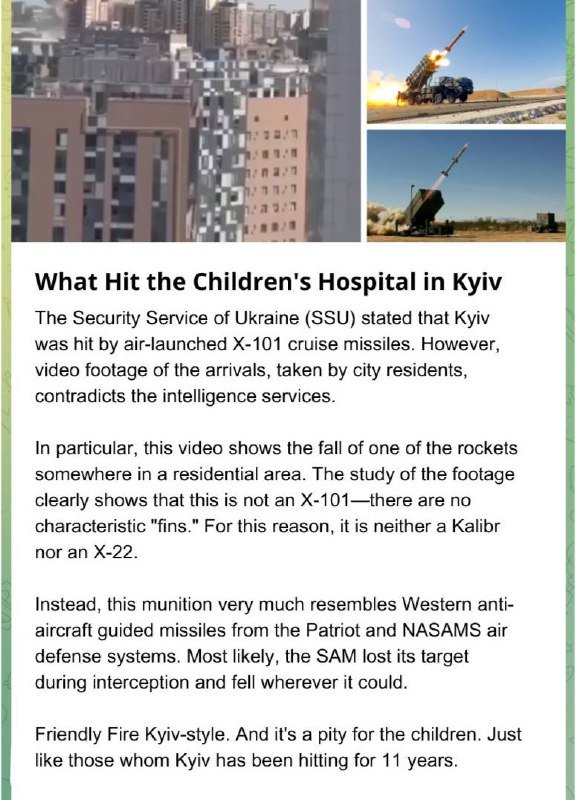
2. They don’t shoot at civilians, but the Armed Forces of Ukraine use them as human shields
The strike on "Ohmatdyt" is no exception — this time, too, they wrote that "the General Staff of the Armed Forces of Ukraine was hiding near the children's hospital" or that there was an ammunition depot near the hospital, and that’s what was hit. No arguments or evidence are provided. Therefore, it is difficult to refute such claims.
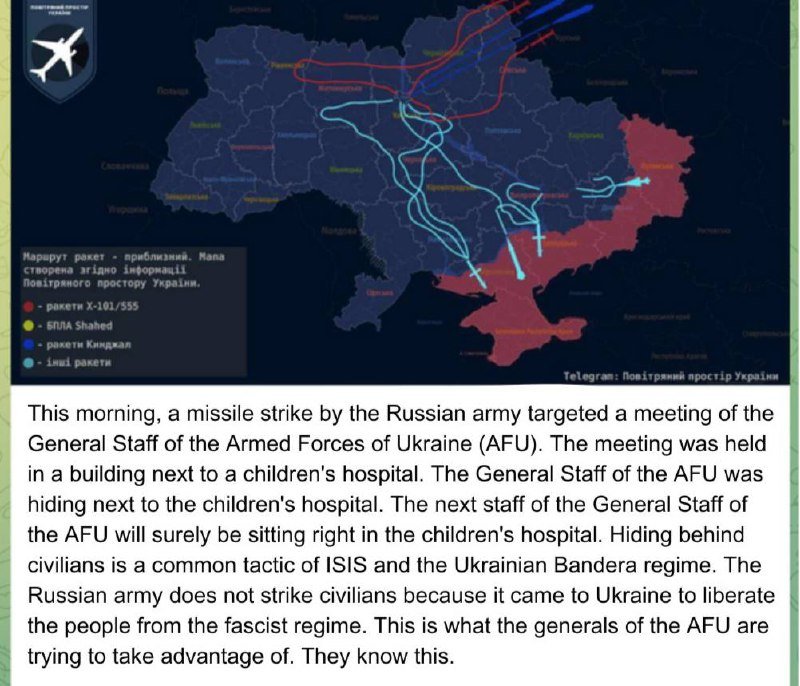
3. Suspiciously few casualties and injuries
Indeed, Russians seriously wrote that, for example, the Kharkiv "Epicenter" was an ammunition depot because after a strike in broad daylight, hundreds of people should have died, not just 19. This time, they are outraged that no children died. Frankly, I have no moral strength to comment on or refute this in any way.

4. But Russians can also show sympathy, especially when they write about "We are all Russians, of one blood, sisters and brothers"
Usually, there are also claims nearby about Americans fighting Russia with Ukrainian hands and at the cost of Ukrainian blood. In Ukraine, this narrative obviously doesn’t resonate much, but it is quite well-supported by the Russian population — they are happy to associate themselves with peacekeepers rather than terrorists.
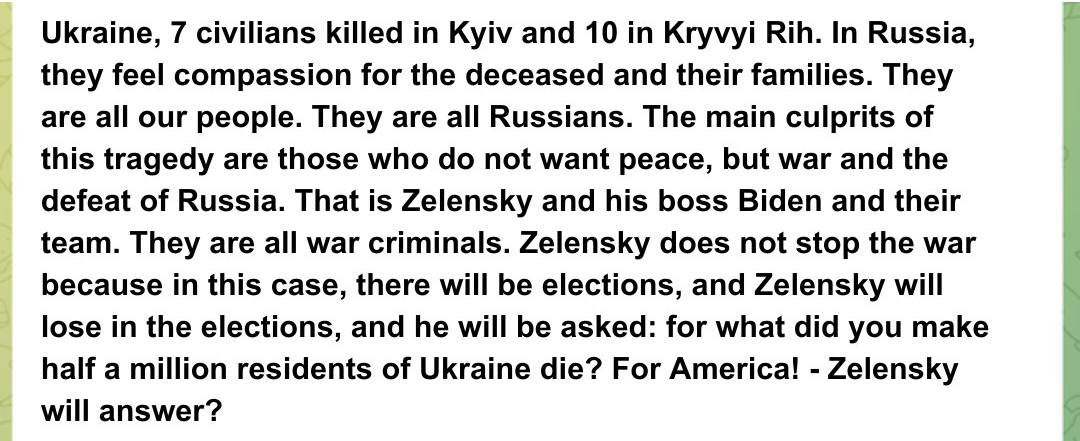
5. "Kyiv regime" / Zelenskyy / "Ukrainian junta" rejoice in deaths as successful information triggers
According to Russian propaganda, Zelenskyy personally rejoices at every photo of an injured child. After all, this stirs up hatred towards Russians (in an already Russophobic Europe) and helps to ask for more weapons and money for the war with Russia.
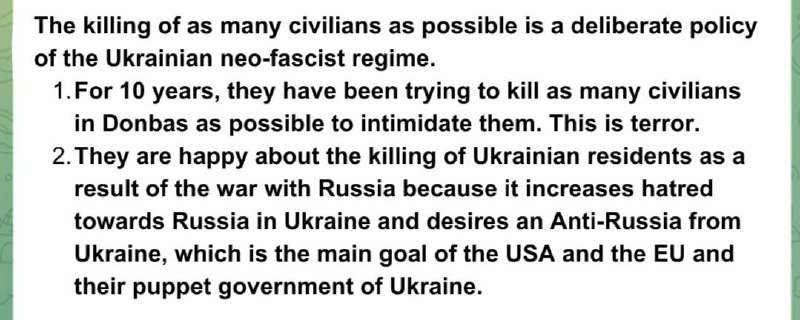
6. It's all a setup and actors' play! (with a reference to Bucha)
Zelenskyy is well-versed in acting and in bringing actors covered in ketchup dressed in medical gowns to the scene of a tragedy. I sincerely hope that there is no need to provide a link to debunk the Russian fake about the "setup" in Bucha.
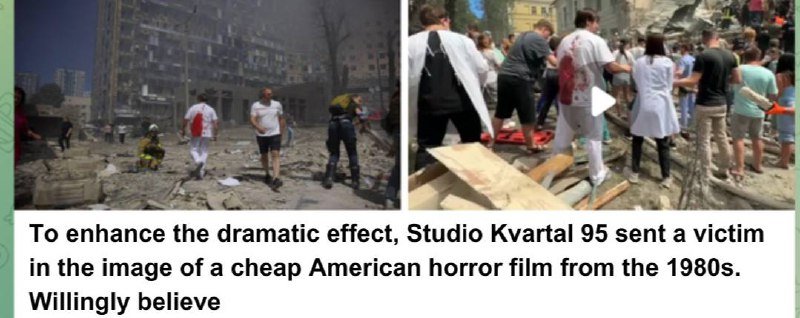
7. This is a deliberate Ukrainian act of terrorism against their own. All for PR and Western aid
Yes, some propagandists seriously suggested that a Ukrainian missile could have been deliberately launched at a Ukrainian hospital for the sake of creating a loud information trigger. It's hard to comment on such claims. For Russians, this is probably a completely normal part of their reality (no, I do not sympathize).
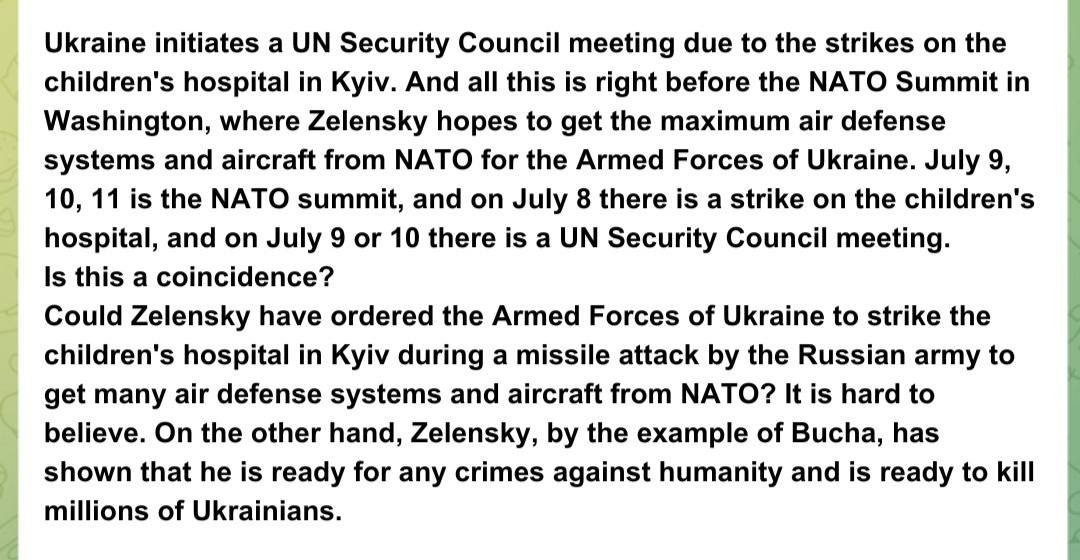
8. Whether it's a setup or not, it happened very conveniently
Just after Orban's visit, on the eve of the NATO summit and the UN Security Council meeting. While we in Ukraine are mentally preparing for each holiday, anniversary, or international event (because we know that on these days there can often be massive shelling), the Russians tirelessly write about the "coincidence" and Ukraine's play for public attention.

9. Every act of terrorism is an opportunity to recall previous fakes and interpretations
It's a way to engage a loyal audience and build a dividing line between "us" and "them." Just mentioning Bucha, the market in Kostyantynivka, or the train station in Kramatorsk is enough. This strategy reinforces a shared identity and creates the illusion of a community fighting on the same side for the sake of truth.
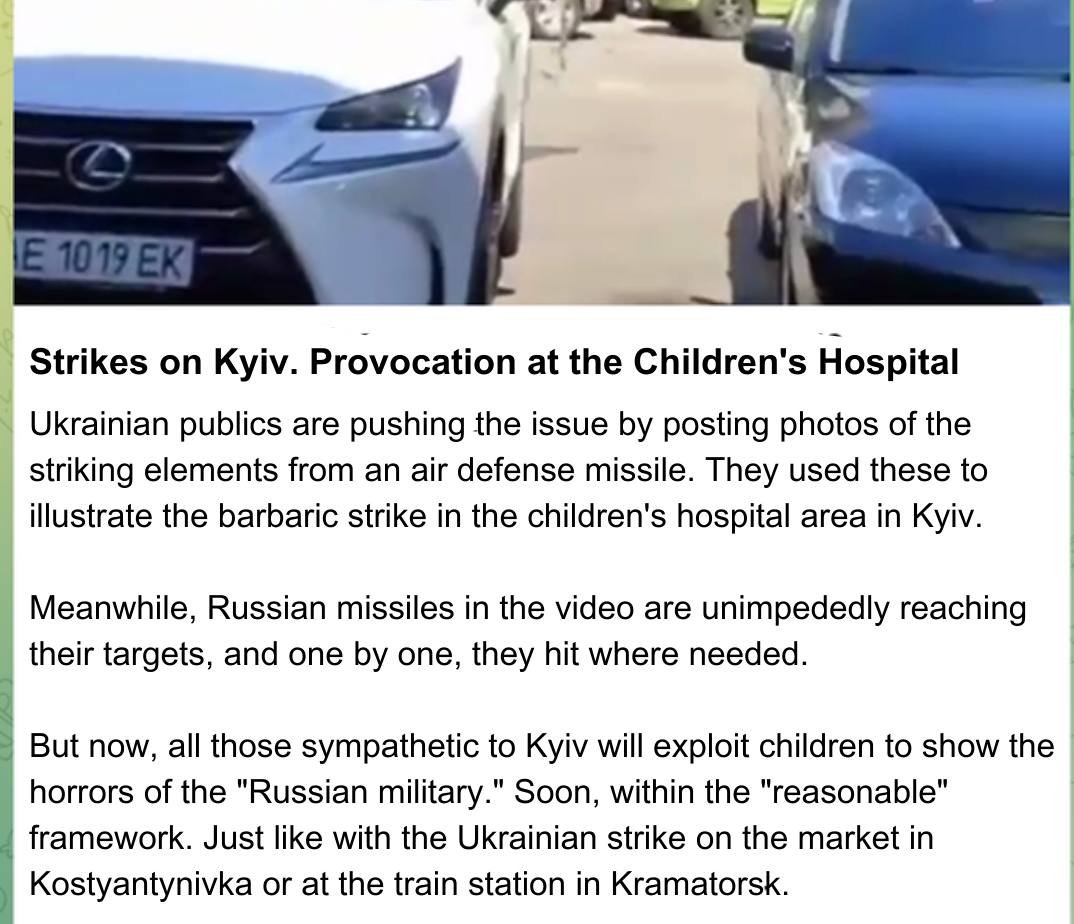
10. Russia has the right to defend and retaliate in this war
They write: "In response to attempts to damage Russian energy and economic facilities, the Russian Armed Forces this morning launched a group strike on Ukraine's military-industrial facilities and the Armed Forces' air bases." And also on "Ohmatdyt." However, the hospital is usually mentioned in a separate post along with one of the previous theses.
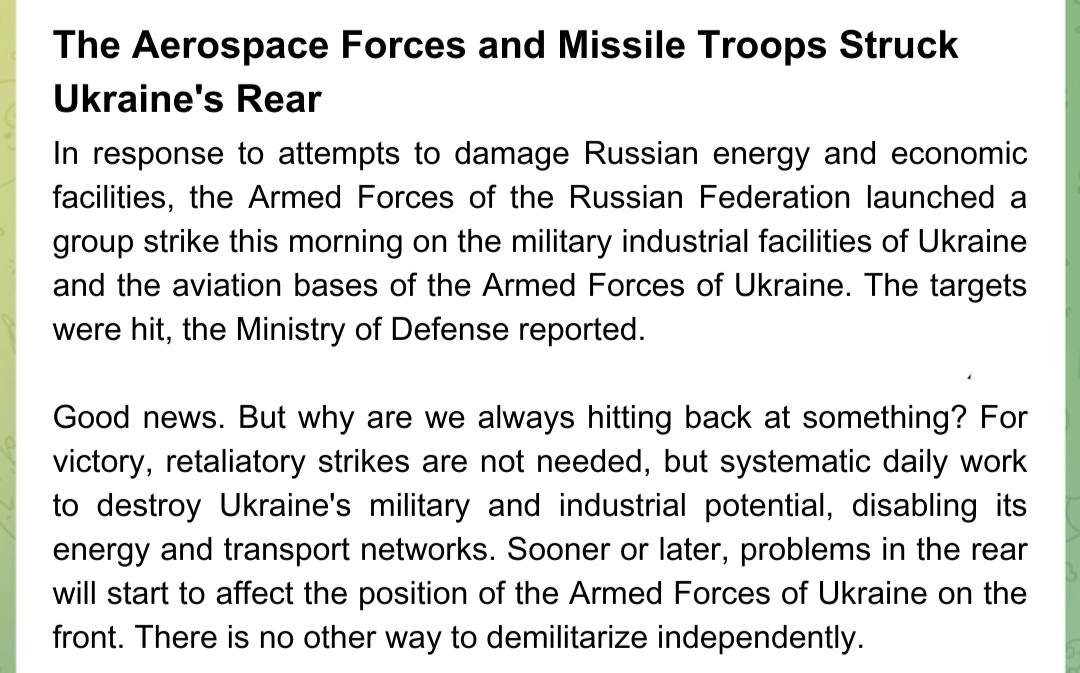
11. Ukrainians also regularly strike civilians and Russian children!
If there were any logic here, then reports that Ukrainians also hit civilians and children almost daily would look like an admission of a targeted Russian strike on a children's hospital. But in the world of propaganda and manipulation, this is just another vivid example of "whataboutism" — shifting the focus and discrediting the opponent without refuting or denying the argument itself. It also effectively scares the Russian population, hinting at retaliation: "Belgorod should be on high alert today."
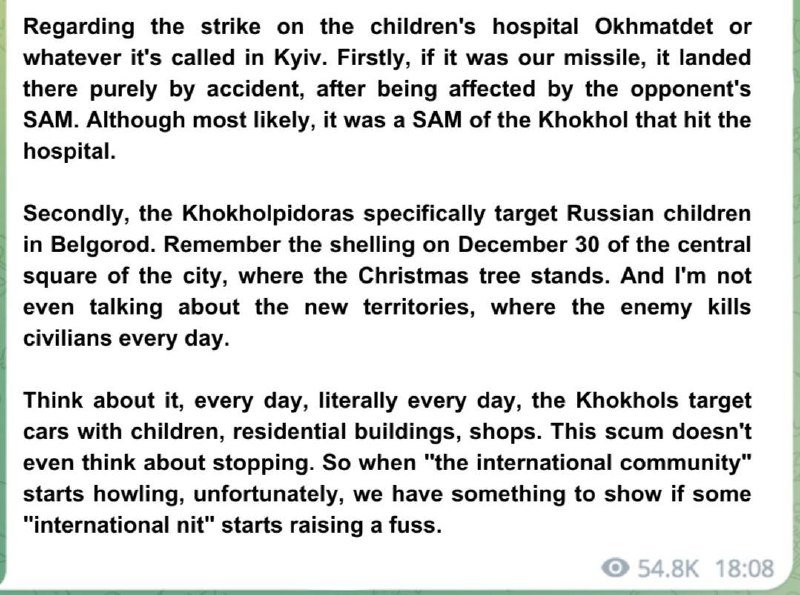
Shariі and other "Ukrainians"
A separate camp of Russian propaganda deserves mention — those who, from abroad, try to present themselves as the "real" Ukrainian opposition.
We are talking about figures ranging from Shariі to Arestovych — most of them also consciously spread Russian theses. However, they have some differences that help them more organically and effectively engage the Ukrainian audience. Here are the characteristic features of their posts:
1. Maintain a facade of "pro-Ukrainianism" and sympathize with the victims of Russian terror
They manage to show sympathy a bit better than the Russians. This is mainly due to the lack of a clear division between "us" and "them."

2. They look for the guilty and responsible. In Ukraine, of course
I haven't seen any Russians or Z-bloggers asking whether there was a plan to evacuate children to shelters in the event of shelling, but Shariі and others pretend to care about this. By the way, in the posts of the "Ukrainian opposition," the shelling is often abstract, in a vacuum, and the person responsible for the shelling often remains unnamed (a technique used by Russians in forming the narrative about the reconstruction of Mariupol, read more about it here). Yes, they do write about Russia as the aggressor, but much less frequently than real Ukrainians.
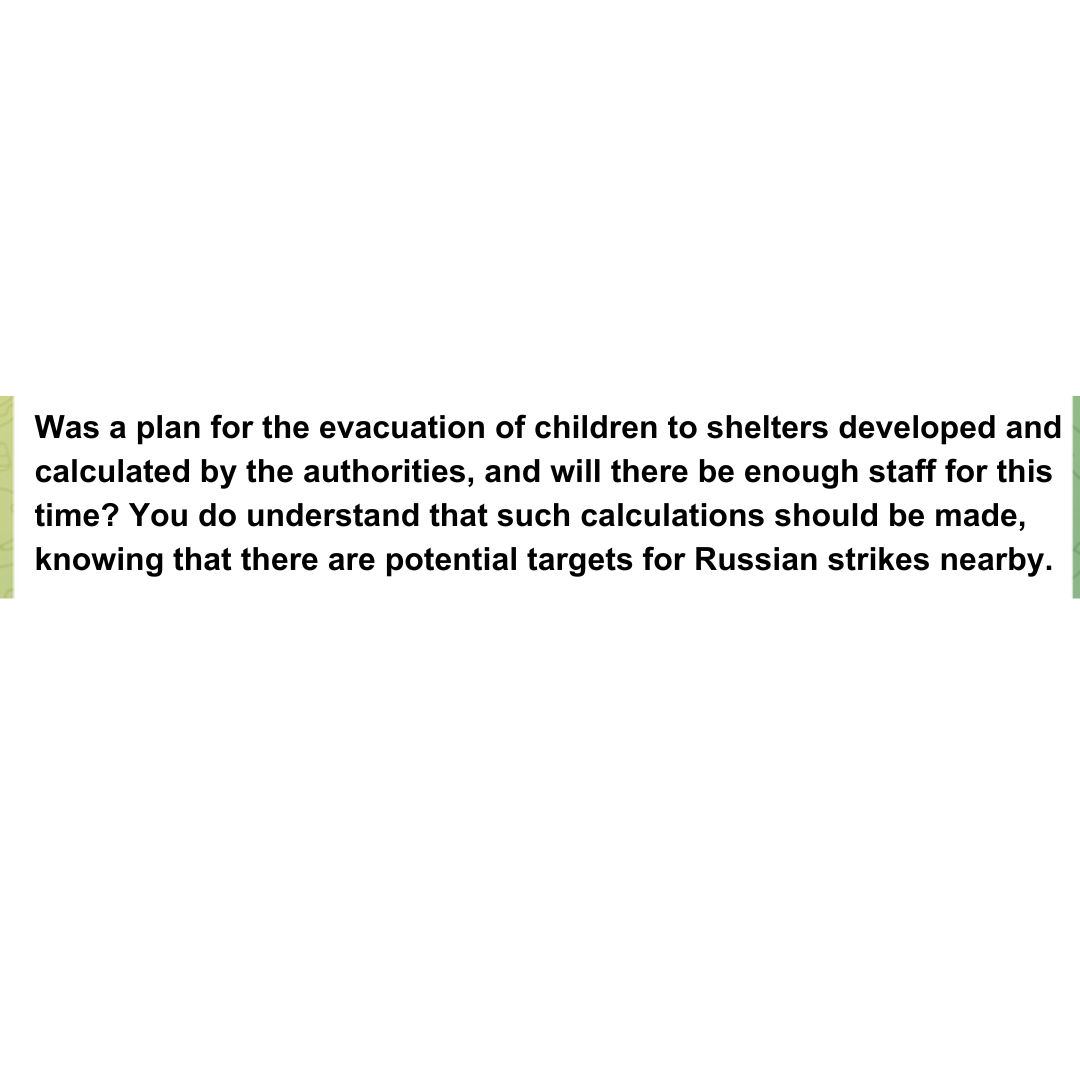
3. The Ukrainian government and Zelensky are always to blame
Even when Russians strike "Ohmatdyt." You see, some abstract local authorities are making money on evacuating cars during the shelling (to which "Ukrainian oppositionists" dedicate separate emotionally manipulative posts), and Zelenskyy is doing PR (i.e., informing the international audience about the consequences of Russian shelling). This approach works much more effectively on Ukrainians because they continue to associate themselves with us. Even from abroad, they speak as if from within Ukrainian society.
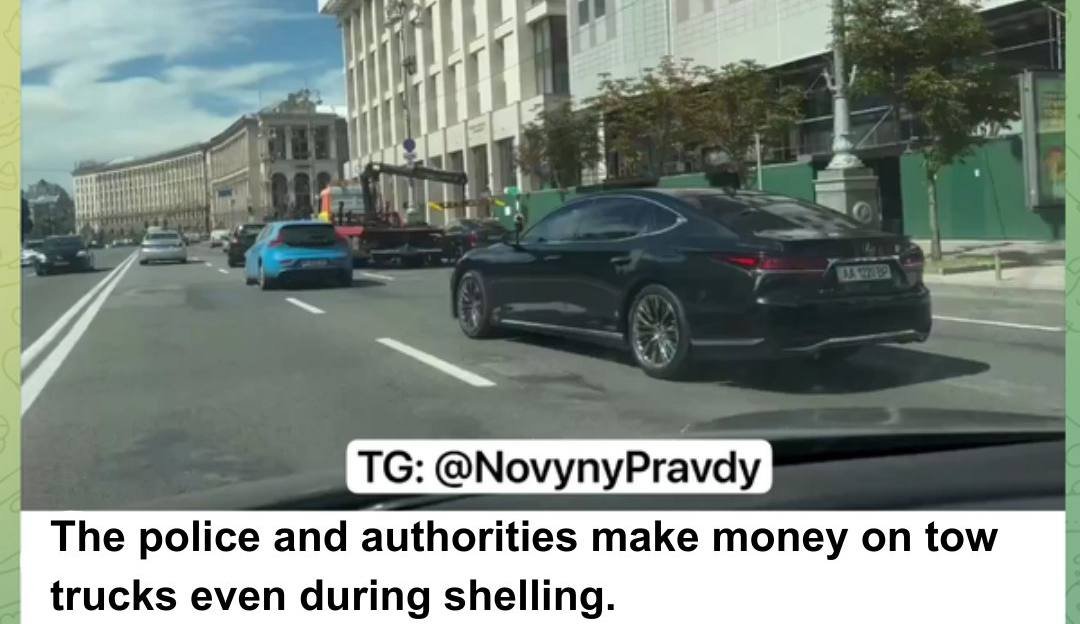
4. Oriented towards an audience that knows the context
They don't need to explain who Bezuhla is or other names of Ukrainian activists, politicians, and high-ranking officials that are well-known to Ukrainians but not to Russians. Therefore, they also play to the audience's recognition and sense that they are still "one of us" to a certain extent.

5. Do not refute Russian attacks but shift the focus
Another example of whataboutism — writing about betrayal because supposedly no one is talking about Kryvyi Rih. Based on this "observation," they start generating explanations as to why everything is being "silenced" (and here, most of the theses of Russian propaganda can be inserted).
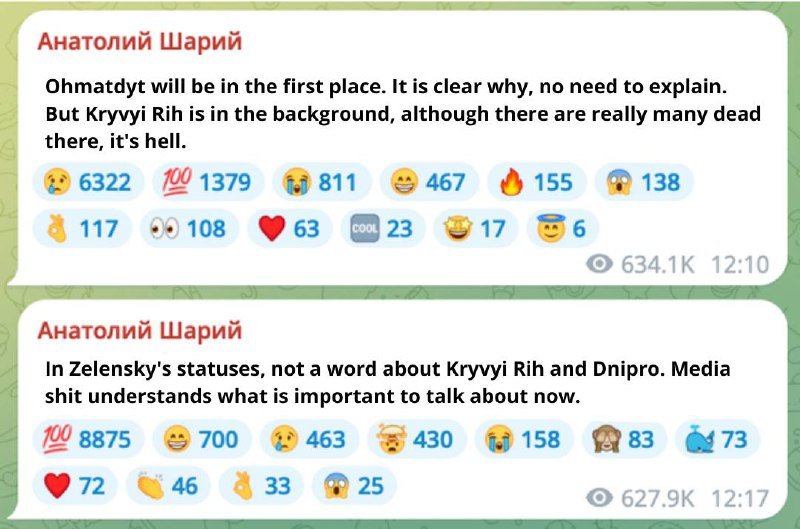
6. In any situation, they promote the thesis of peace and "we need to negotiate"
Quote: "A bad peace is better than a good war." The problem is that Russia is not ready to give up its intentions to completely destroy Ukrainians. Therefore, talks about peace are just enemy propaganda to gain an advantage on the battlefield while Ukraine adheres to another ceasefire. This has happened before. These talks about peace essentially imply more effective killing of Ukrainians.
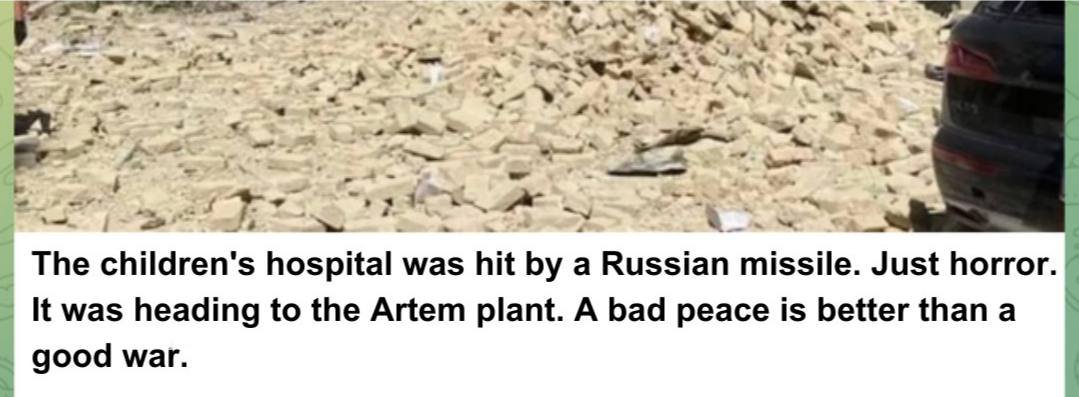
But it seems that this narrative spread much more this time than usual. And yesterday, after the strike on "Ohmatdyt," it was picked up or commissioned for promotion by some Ukrainian bloggers who have a large audience and predominantly produce entertainment content. They started expressing their emotions, accusing those who are easier to reach—the Ukrainian (not Russian) authorities.
It is worth reminding here: any emotions reduce our attentiveness and lower the level of critical thinking towards information. Emotions exhaust and weaken us. And it’s not only the Russian missiles aimed at Ukrainian hospitals that work on emotions, but also the hate-filled Russian posts proposing to strike again. It is emotions that make us vulnerable to most Russian narratives, along with distrust towards all information and the Ukrainian authorities and society.

